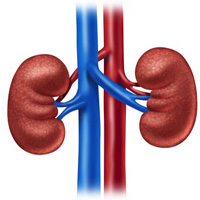Obesity rates in renal stone formers from various countries

All claims expressed in this article are solely those of the authors and do not necessarily represent those of their affiliated organizations, or those of the publisher, the editors and the reviewers. Any product that may be evaluated in this article or claim that may be made by its manufacturer is not guaranteed or endorsed by the publisher.
Authors
Objective: To collect evidence on the rate of obesity in renal stone formers (RSFs) living in different climatic areas and consuming different diets.
Materials and methods: Data of adult renal stone formers were retrospectively collected by members of U-merge from 13 participant centers in Argentina, Brazil, Bulgaria (2), China, India, Iraq (2), Italy (2), Nigeria, Pakistan and Poland. The following data were collected: age, gender, weight, height, stone analysis and procedure of stone removal.
Results: In total, 1689 renal stone formers (1032 males, 657 females) from 10 countries were considered. Average age was 48 (±14) years, male to female ratio was 1.57 (M/F 1032/657), the average body mass index (BMI) was 26.5 (±4.8) kg/m2. The obesity rates of RSFs in different countries were significantly different from each other. The highest rates were observed in Pakistan (50%), Iraq (32%), and Brazil (32%), while the lowest rates were observed in China (2%), Nigeria (3%) and Italy (10%). Intermediate rates were observed in Argentina (17%), Bulgaria (17%), India (15%) and Poland (22%). The age-adjusted obesity rate of RSFs was higher than the age-adjusted obesity rate in the general population in Brazil, India, and Pakistan, whereas it was lower in Argentina, Bulgaria, China, Italy, and Nigeria, and similar in Iraq and Poland.
Conclusions: The age-adjusted obesity rate of RSFs was not higher than the age-adjusted obesity rate of the general population in most countries. The relationship between obesity and the risk of kidney stone formation should be reconsidered by further studies carried out in different populations.
How to Cite
PAGEPress has chosen to apply the Creative Commons Attribution NonCommercial 4.0 International License (CC BY-NC 4.0) to all manuscripts to be published.

 https://doi.org/10.4081/aiua.2021.2.189
https://doi.org/10.4081/aiua.2021.2.189



